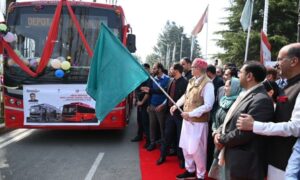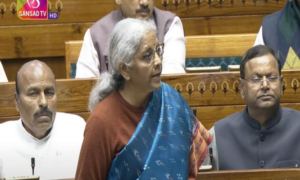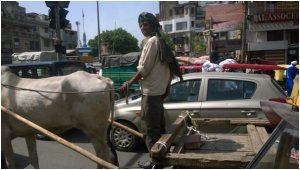
With each passing year, the urban population in India is expanding and creeping into new areas. As per the Census 2011, 31 per cent of India’s population (377 million people) lives in cities. It is evident that urban growth is very uneven and hazardous. According to the Economic Survey 2017, “By all accounts, urbanisation will define the trajectory of Indian development. The exodus of rural Indians into the cities over the coming decades will pose tremendous challenges for government, particularly the municipalities who will be primarily responsible for providing the services that the new migrants – and established residents– will need.”
The Economic Survey added, “Success in overcoming these challenges will be vital if the nation is to seize the opportunities that migration to the centres of economic activity can create.”
On 25th June 2015, Narendra Modi (Prime Minister of India) launched Smart Cities, AMRUT, Urban Housing Missions under the rubric of the Ministry of Housing and Urban Affairs. In this backdrop, the government claims that people drive urban planning and development in the making for the first time in the country. After more than two years, it is a distant dream. People in the planning process are near absent. Administratively, the state governments, the municipal corporations, municipalities and Urban Local Bodies (ULBs) handle primary responsibilities of developing the urban areas. It is evident that a number of departments claim their stake in the development of cities in India. Some of them are Police Department, Healthcare and many more.
Administratively, the state governments, the municipal corporations, municipalities and Urban Local Bodies (ULBs) handle primary responsibilities of developing the urban areas. It is evident that a number of departments claim their stake in the development of cities in India. Some of them are Police Department, Healthcare and much more.
In this backdrop, there is a need to shed light on salient features of Smart Cities Mission (SCM). In this account, I’m examining intersections of governance, institutional mechanism and the urban politics keeping the Mission in the mind.
Smart Cities Mission (SCM): SCM is a city rejuvenation programme for 100 cities in India. Several studies estimated a significant uptick in migration in India. In order to tackle menace in the urban India, the government is trying to evolve a new mechanism.
The Mission document listed the core infrastructure elements under a smart city. The Core Infrastructure Elements in a Smart City:
- Adequate water supply
- Assured electricity supply
- Sanitation, including solid waste management
- Efficient urban mobility and public transport
- Affordable housing, especially for the poor
- Robust IT connectivity and digitalization
- Good governance, especially e-Governance and citizen participation
- Sustainable environment
- Safety and security of citizens, particularly women, children and the elderly
- Health and education
(Source: Smart City: Mission Statement and Guidelines)
In the wake of the Smart City Mission, PwC India kicked started a discussion. With help from graphical presentation, PwC India showed a holistic ecosystem for the smart city in India. (See the Following Graph)
Smart City: A Holistic Ecosystem
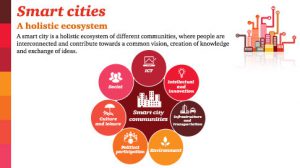
Source: http://www.pwc.in/industries/smart-cities.html
In India, development pattern varies from state to state and city to city. Some typical features of comprehensive development in Smart Cities are enunciated below:
Smart City Features:
- Promoting mixed land use in area-based
- Housing and inclusiveness
- Creating walkable localities
- Preserving and developing open spaces
- Promoting a variety of transport options
- Making governance citizen-friendly and cost effective
- Giving an identity to the city
- Applying Smart Solutions to infrastructure and services
(Source: Smart City: Mission Statement and Guidelines)
Financing Mechanism under the Mission: In the wake of the Fourteen Finance Commission, the new scheme suggests that cities may raise these funds through:
i: Raise their own resources such as collection of user fees, land monetization, property taxes etc.
ii: Finance mechanisms such as municipal bonds
iii: Leverage borrowings from financial institutions, and
iv: Encourage the private sector through Public Private Partnerships (PPPs).
Going through the given detail in the policy document, the SCM is advocating for a new institutional mechanism for a smart city. In another graphical presentation, PwC India listed an ecosystem for partners in the smart cities to ensure an inclusive and citizen-centric community.
Partners in Smart Cities for Inclusiveness:
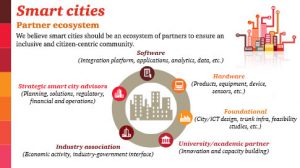
Source: http://www.pwc.in/industries/smart-cities.html
The above-mentioned graphical presentations look extremely pleasant to eyes. But the reality is completely different and disappointing. After a successful roll out of the Mission, the urban pockets like the National Capital Region are becoming untenable. A huge number of drains are clogged. Routinely, citizens are grappling with filth. Safai Karmchais dump a major part of waste in the adjoining drains without no regret(See the Picture). Almost all roads are occupied with various kinds of vehicle. Foot paths are grabbed by various kind entrepreneurs and others.
In Seminar, Partha Mukhopadhyay wrote an article -The un-smart city. Mukhopadhyay argued, “Instead, the vision about smart cities in the world’s largest democracy seems to be about avoiding the messiness of political representation and a belief, naïve or motivated, that smart cities are about symbols; about pipes and wires, glass and steel, and apps and Wi-Fi, providing packaged solutions to perceived problems, rather than about enabling the power of citizens to find the financial and intellectual resources to address the problems they perceive. That, given what we have learnt from cities around the world, is not just sad, but also very un-smart.”
During the Monsoon Season, people grapple with water logging in the urban centres. Many of them left their homes early in the morning in order to reach their destinations. Routinely, decision makers and politicians rushed to blame their opponents. Sadly, in the entire discussion, various things are missing. One of them is how the concerned people clean the dirt and waste in the urban pockets? Usually, they dump various kinds of wastes in the adjoining Naalis… It’s not an isolated case. It’s quite apparent in the urban India. In this backdrop, what kind of mechanism we have to cope with such challenges in the backdrop of a much-hyped intervention- the Smart City Mission? Without addressing these issues, how Indian cities will be smart…!


